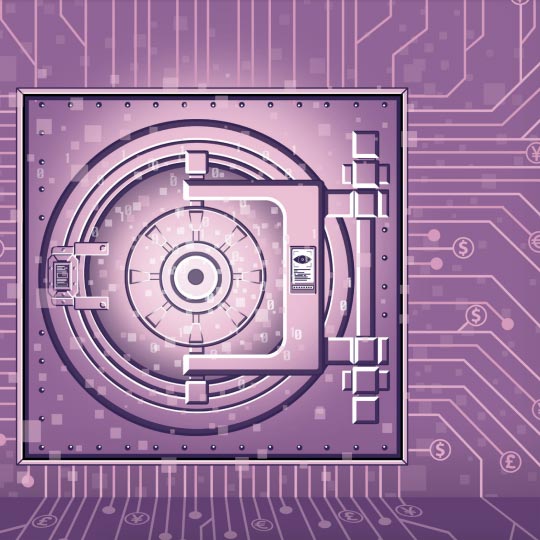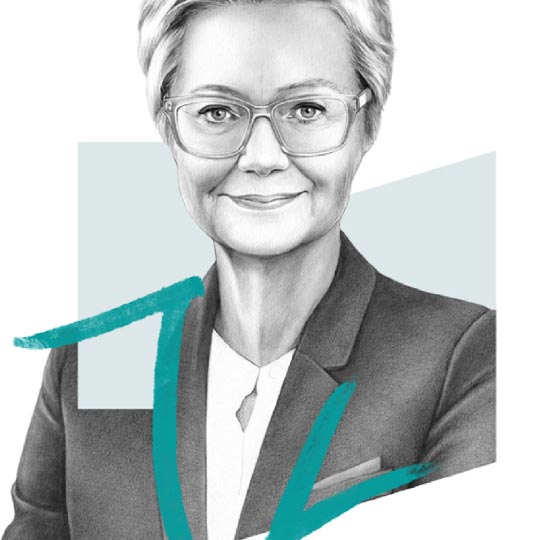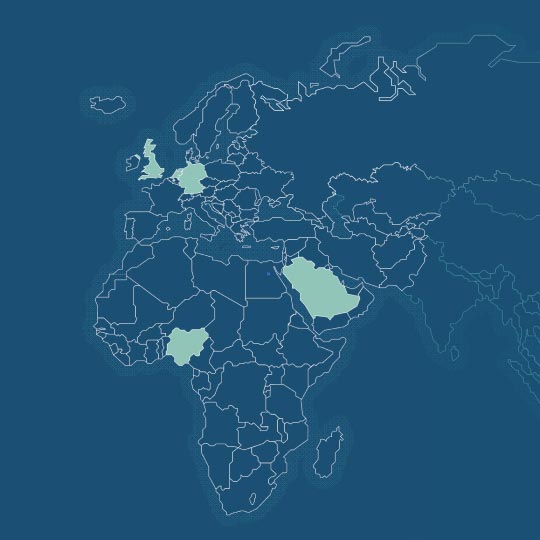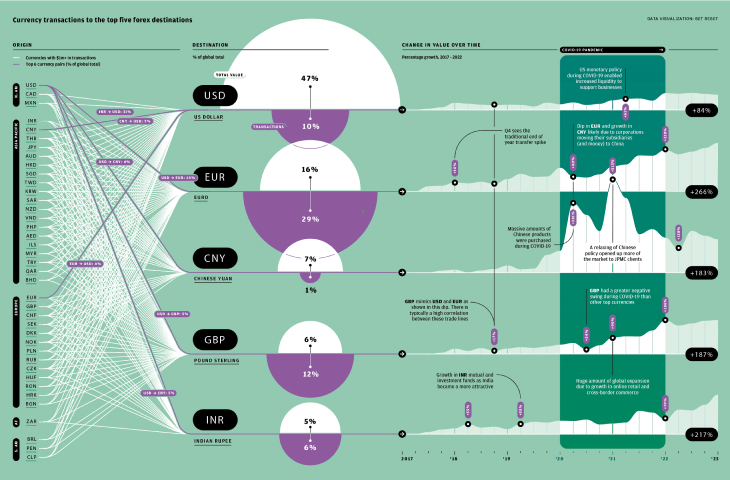From startups to legacy brands, you're making your mark. We're here to help.
-
Innovation Economy
Fueling the success of early-stage startups, venture-backed and high-growth companies.
-
Midsize Businesses
Keep your company growing with custom banking solutions for middle market businesses and specialized industries.
-
Large Corporations
Innovative banking solutions tailored to corporations and specialized industries.
-
Commercial Real Estate
Capitalize on opportunities and prepare for challenges throughout the real estate cycle.
-
Impact Banking & Advisory
When our communities succeed, we all succeed. Local businesses, organizations and community institutions need capital, expertise and connections to thrive.
-
International Banking
Power your business' global growth and operations at every stage.
Key Links
Prepare for future growth with customized loan services, succession planning and capital for business equipment.
-
Asset Based Lending
Enhance your liquidity and gain the flexibility to capitalize on growth opportunities.
-
Equipment Financing
Maximize working capital with flexible equipment and technology financing.
-
Trade & Working Capital
Experience our market-leading supply chain finance solutions that help buyers and suppliers meet their working capital, risk mitigation and cash flow objectives.
-
Syndicated Financing
Leverage customized loan syndication services from a dedicated resource.
-
Commercial Real Estate
Capitalize on opportunities and prepare for challenges throughout the real estate cycle.
-
Employee Stock Ownership Plans
Plan for your business’s future—and your employees’ futures too—with objective advice and financing.
Key Links
Serving the world's largest corporate clients and institutional investors, we support the entire investment cycle with market-leading research, analytics, execution and investor services.
-
Institutional Investors
Putting your long-tenured investment teams on the line to earn the trust of institutional investors.
-
Markets
Direct access to market leading liquidity harnessed through world-class research, tools, data and analytics.
-
Prime Services
Helping hedge funds, asset managers and institutional investors meet the demands of a rapidly evolving market.
-
Global Research
Leveraging cutting-edge technology and innovative tools to bring clients industry-leading analysis and investment advice.
-
Securities Services Solutions
Helping institutional investors, traditional and alternative asset and fund managers, broker dealers and equity issuers meet the demands of changing markets.
Key Links
Providing investment banking solutions, including mergers and acquisitions, capital raising and risk management, for a broad range of corporations, institutions and governments.
-
Center for Carbon Transition
J.P. Morgan’s center of excellence that provides clients the data and firmwide expertise needed to navigate the challenges of transitioning to a low-carbon future.
-
Corporate Finance Advisory
Corporate Finance Advisory (“CFA”) is a global, multi-disciplinary solutions team specializing in structured M&A and capital markets. Learn more.
-
Development Finance Institution
Financing opportunities with anticipated development impact in emerging economies.
-
Sustainable Solutions
Offering ESG-related advisory and coordinating the firm's EMEA coverage of clients in emerging green economy sectors.
-
Mergers and Acquisitions
Bespoke M&A solutions on a global scale.
-
Capital Markets
Holistic coverage across capital markets.
Your partner for commerce, receivables, cross-currency, working capital, blockchain, liquidity and more.
Key Links
A uniquely elevated private banking experience shaped around you.
-
Banking
We have extensive personal and business banking resources that are fine-tuned to your specific needs.
-
Investing
We deliver tailored investing guidance and access to unique investment opportunities from world-class specialists.
-
Lending
We take a strategic approach to lending, working with you to craft the right financing solutions matched to your goals.
-
Planning
No matter where you are in your life, or how complex your needs might be, we’re ready to provide a tailored approach to helping your reach your goals.
Whether you want to invest on your own or work with an advisor to design a personalized investment strategy, we have opportunities for every investor.
-
Invest on your own
Unlimited $0 commission-free online stock, ETF and options trades with access to powerful tools to research, trade and manage your investments.
-
Work with our advisors
When you work with our advisors, you'll get a personalized financial strategy and investment portfolio built around your unique goals-backed by our industry-leading expertise.
-
Expertise for Substantial Wealth
Our Wealth Advisors & Wealth Partners leverage their experience and robust firm resources to deliver highly-personalized, comprehensive solutions across Banking, Lending, Investing, and Wealth Planning.
Explore a variety of insights.
Key Links
Insights by Topic
Explore a variety of insights organized by different topics.
Key Links
Insights by Type
Explore a variety of insights organized by different types of content and media.
Key Links
We aim to be the most respected financial services firm in the world, serving corporations and individuals in more than 100 countries.
Key Links
- Payments
- Payments Unbound
- Payments Unbound - The digital magazine
- Payments Unbound Articles
- CVRPs Will Help Make Payments More Frictionless
Featuring future-thinking clients
Payments Unbound unites clients from a wide range of industries to bring you innovative insights that help you navigate the future of payments.
Are you ready for the ‘variable’ future of payments?
Ideas bank
Taking a payment typically involves a credit or debit card—and a more convoluted process than most consumers realize. The business must obtain card details from the customer and pass them to the payment processor, which gives them to the card network, which sends messages back and forth between various entities before authorization, clearing and—finally!—settlement can take place. And in the middle of that, perhaps the customer also receives a code via a telco to type in to prove that it was really them using the card in the first place.
That seems like an awful lot of work—and intermediaries, all taking a cut—to get money from the customer’s bank to the business’. In an age when the internet has disintermediated countless industries, you have to wonder why things are still done that way.
Imagine you’re a retailer. Wouldn’t it be more cost-efficient for you—and more frictionless for your customer—if you could just say: "Hi, it looks like you’re buying from us again—thanks for that—why don't you just let our bank take the money from your bank”? And if convenience isn’t enough to persuade customers that’s a good idea, perhaps you might sweeten the deal by saying: "Oh, and if you do that, we will give you triple points as a thank-you”—paid for, of course, with some of that money you’re saving.
Soon you will be able to, thanks to “Commercial Variable Recurring Payments” or CVRPs.
CVRPs will let merchants take payment directly from a customer’s bank account, provided that the amounts are within the limits and frequencies defined by that individual. In the case of buying goods from their favorite retailer, for instance, the retailer might be permitted to take a payment of up to $1,000 no more than four times per month. All the customer has to do is verify their identity at the point of sale using a form of strong authentication, such as a passkey, and the funds are transferred automatically. The retailer gets their money quicker, there are fewer intermediaries taking a cut and, best of all, the customer does not have to do anything to trigger the payment.
CVRPs are a major innovation to emerge from open banking, a wider movement that mandates financial institutions to open their data to third parties. We’ve seen the launch of one form of VRP already: ‘sweeping’ VRPs, which enable individuals to automate payments between their own bank accounts. CVRPs take this out into the world of commerce—effectively a real-time, customizable version of a direct debit. Because CVRPs make account-to-account (A2A) payments so much more frictionless, they are forecast to cause a surge in A2A transaction volumes.
Businesses have good reason to get excited. Not only are CVRPs a fast and cost-efficient payment method, but they are also less likely to fail: card transactions are more susceptible to processing errors, and card details can expire.
CVRPs can also help to obviate the security risks associated with traditional means of payment. CVRPs don’t require businesses to store card or bank account details, so if an organization suffers a data breach, there is no sensitive financial information to lose. What’s more, CVRPs must be initially set up using strong authentication, which isn’t true for direct debits or for all card transactions. At a time when fraud is a significant and growing problem for businesses, that is a boon.
In the future, CVRPs could also reimagine B2B payments. If a supplier is regularly invoicing for providing goods or services, a CVRP could enable this payment to happen automatically. You might imagine that a whole new class of “supplier-initiated payments” could emerge, where trusted suppliers are permitted to circumvent the lengthy, error-vulnerable and admin-intensive invoice payment process by simply triggering the correct payment themselves.
These virtues are relevant to all organizations, but CVRPs offer a specific benefit when it comes to subscription services: as consumers can audit and cancel CVRPs all in one place—their banking app—they offer an extra degree of control that may increase the number of subscriptions consumers are willing to sign up for.1 The UK—with its expanding open banking ecosystem—is in the vanguard, with CVRP services on the way, and ready to be embedded into a wider range of customer journeys including utilities, subscription services, retail and financial institutions. Phase one rollout of commercial CVRPs is expected in the latter half of this year, although some commentators have suggested that this may be delayed until early 2025. UK payment providers report that they expected over half of their payment flows to convert to such open banking-based payments in the next three years.2
So, what has to happen to realize the benefits? Consumers will need to be educated to ensure they not only understand the advantages of this as-yet-unfamiliar payment method, but are also willing to trust CVRPs. Given that businesses do not get access to any sensitive data other than the name of the consumer, this should be achievable. Perhaps more complex will be incentivizing banks to invest to deliver CVRPs to their customers, and incentivizing merchants to accept CVRPs, with a commercial model that works for all parties. But when the agreements come together, the impact will be significant. In Brazil, CVRPs in the form of the upcoming “Pix Automatic” is expected to reduce companies' operating costs and collections costs by up to 50 percent, giving them more resources to invest and stimulating economic growth.3 In other words: get ready. The frictionless future of payments is about to get a little closer.
BY WIRED
IMAGE: ED TUCKWELL
SOURCES: WWW.JPMORGAN.COM/PAYMENTS-UNBOUND/SOURCES
The views and opinions expressed herein are those of the author and do not necessarily reflect the views of J.P. Morgan, its affiliates, or its employees. The information set forth herein has been obtained or derived from sources believed to be reliable. Neither the author nor J.P. Morgan makes any representations or warranties as to the information’s accuracy or completeness. The information contained herein has been provided solely for informational purposes and does not constitute an offer, solicitation, advice or recommendation, to make any investment decisions or purchase any financial instruments, and may not be construed as such.
© 2024 JPMorgan Chase & Co. All rights reserved. JPMorgan Chase Bank, N.A. Member FDIC. Deposits held in non-U.S. branches are not FDIC insured. Non-deposit products are not FDIC insured. The statements herein are confidential and proprietary and not intended to be legally binding. Not all products and services are available in all geographical areas. Visit jpmorgan.com/paymentsdisclosure for further disclosures and disclaimers related to this content.
MAGAZINE
Volume 6: Open Banking Is Just Getting Started Volume 5: Game Changer Volume 4: Ready Payer One Volume 3: Bank to the Future Volume 2: The New World of Commerce Volume 1: The Money Revolution Browse all articlesWEBINARS
View all webinarsYou're now leaving J.P. Morgan
J.P. Morgan’s website and/or mobile terms, privacy and security policies don’t apply to the site or app you're about to visit. Please review its terms, privacy and security policies to see how they apply to you. J.P. Morgan isn’t responsible for (and doesn’t provide) any products, services or content at this third-party site or app, except for products and services that explicitly carry the J.P. Morgan name.













































































